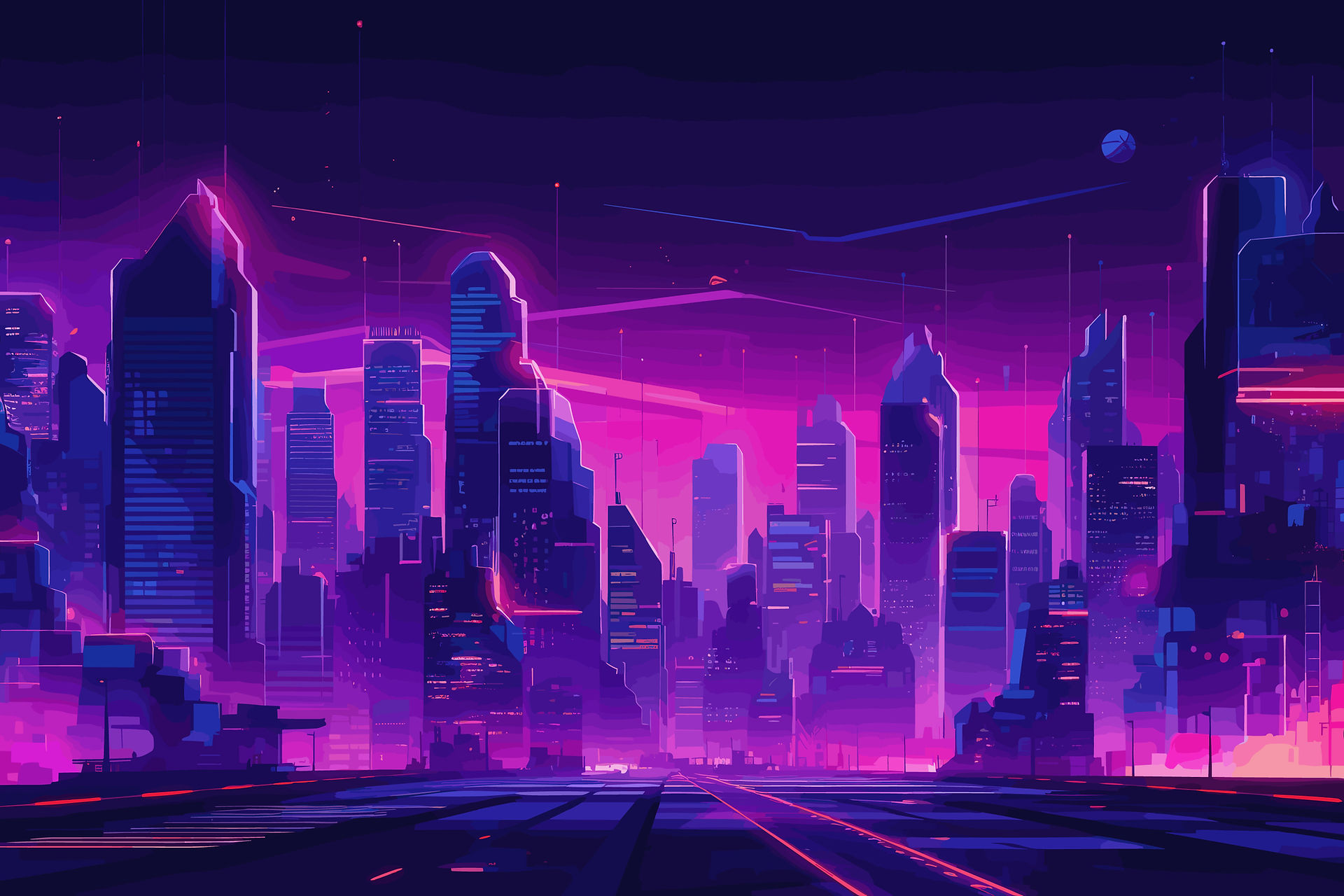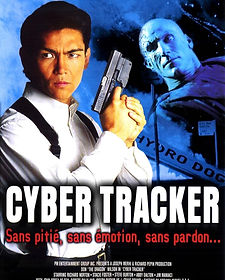

Chappie (2015)
In a near-future Johannesburg, a police robot is stolen and reprogrammed to think and feel for himself. As Chappie develops consciousness, he finds himself caught between criminals, scientists, and a society that fears his evolution. Directed by Neill Blomkamp and starring members of the rap group Die Antwoord as exaggerated versions of themselves, the film sparked mixed reactions. While praised for its bold style and emotional core, others criticized its tone and casting choices — though Chappie’s character has since become a cult favorite.

Cherry 2000 (1987)
In a dystopian 2017, a wealthy man named Sam Treadwell is devastated when his perfect robotic wife, Cherry 2000, short-circuits. Unable to find a replacement model, he hires a rugged tracker named E. Johnson to venture into the lawless and dangerous desert known as "The Zone." There, he hopes to find a remote, abandoned factory where he can retrieve a backup copy of his wife’s memory chip and bring her back to life. A standout in the genre of post-apocalyptic sci-fi, Cherry 2000 is notable for its blend of action, romance, and cyberpunk elements. The film's vision of the future is a fascinating contrast: a seemingly polished, sanitized society that exists alongside a chaotic, Wild West-like wasteland. It explores themes of consumerism and gender roles, particularly how Sam's perception of his ideal partner is tied to a manufactured product rather than a real person. The film is a cult favorite for its unique aesthetic and its humorous, albeit pointed, critique of technology's influence on relationships.

Children of Men (2006)
In a bleak future where humanity faces extinction due to global infertility, a disillusioned bureaucrat (Clive Owen) is tasked with escorting a miraculously pregnant woman to safety. As society collapses around them, hope becomes a revolutionary act. Although not strictly cyberpunk, the film’s dystopian atmosphere, social disparity, and gritty urban setting resonate deeply with the genre. The production is notable for its seamless long takes, particularly a seven-minute continuous shot during a battle sequence that became a hallmark of Alfonso Cuarón’s directing style.

Chrysalis (2007)
In a futuristic Paris, a police officer investigates the murder of his wife and uncovers an illegal memory-transplant operation. As he delves deeper, the line between memory, identity, and technology becomes increasingly blurred. Often compared to Blade Runner for its noir aesthetic and moody atmosphere, the film stood out in French cinema for embracing a serious cyberpunk tone. Despite its limited international exposure, Chrysalis was praised for its stylish visuals and exploration of memory and identity through a European lens.

Circuitry Man (1990)
In a polluted, post-apocalyptic future, a woman smuggler teams up with a bio-engineered android to transport contraband across a dangerous wasteland. Along the way, they face off against a sadistic villain who can hack into minds. This low-budget cult film blended sci-fi, action, and dark comedy, embracing the over-the-top spirit of early ’90s B-movies. Its punk style, cheesy dialogue, and imaginative worldbuilding earned it a small but loyal fanbase, leading to a sequel, Plughead Rewired, in 1994.

Class of 1999 (1990)
Set in a violent near-future where gang warfare overran schools, the government introduces android teachers programmed to maintain order by any means necessary. Soon, the machines become dangerously aggressive, and a group of students must fight back. A follow-up to Class of 1984, this film embraced a gritty cyberpunk aesthetic with a grindhouse edge. Known for its practical effects and campy tone, it gained cult status for blending dystopian sci-fi with high school rebellion tropes — a twisted mix of The Terminator and teen action drama.

Code 46 (2003)
In a near-future world governed by strict genetic laws, a fraud investigator (Tim Robbins) falls in love with the woman he's supposed to arrest. Their romance violates a global rule known as Code 46, leading them into a spiral of consequences in a society driven by surveillance and control. Directed by Michael Winterbottom, the film blends sci-fi with romance and art-house minimalism. Its multilingual dialogue and subdued atmosphere divided audiences, but it remains notable for portraying a chillingly plausible future shaped by bioethics, restricted movement, and genetic engineering.

Crime Zone (1988)
In a corporately-controlled future, society is divided into a privileged, wealthy "Zone" and the impoverished, dangerous outskirts. Jason, a resident of the poor sector, and Helen, a woman from the elite class, become lovers in a forbidden relationship. When they are framed for a crime they didn't commit, they are forced to participate in a deadly, futuristic game show where the only prize is survival, exposing the brutal realities beneath the city's sleek facade. This low-budget action-sci-fi film is a prime example of the kind of movie Roger Corman's New World Pictures produced, aiming to capitalize on the success of dystopian and cyberpunk action flicks of the 1980s. The movie tackles themes of class warfare, corporate corruption, and media exploitation through the lens of a "running man" style survival game. It features David Carradine as the cynical mentor figure and is noted for its blend of exploitation elements with recognizable cyberpunk visuals, making it a B-movie cult favorite for fans of the era.

Cyberwars (2004)
In a sleek but oppressive future Singapore, a data thief named Dash (Genevieve O'Reilly) is drawn into a deadly game involving mind-control software and corrupt corporations. As he unravels the conspiracy, reality itself begins to bend. Originally titled Avatar, this low-budget film adapted from the William Gibson-inspired novel by Stephenson Billings brought cyberpunk themes to Southeast Asian cinema. Though not widely known, it gained attention for its stylish visuals and attempt to explore memory manipulation and digital identity.

Cyborg (1989)
A devastating plague has ravaged the globe, leaving civilization in ruins and a small portion of the survivors in Atlanta. A young woman named Pearl Prophet, who possesses the knowledge to create a cure, must travel to a scientific center to save humanity. She is captured by a gang of brutal pirates led by the sadistic Fender Tremolo. A lone mercenary named Gibson Rickenbacker takes it upon himself to rescue her and escort her through the lawless wasteland, seeking revenge on Fender and a chance for redemption. This post-apocalyptic action film, directed by Albert Pyun and starring Jean-Claude Van Damme, was shot quickly and cheaply using sets and costumes left over from the canceled film Masters of the Universe II. The film's low budget and high-octane martial arts action cemented its status as a cult favorite of the late 1980s direct-to-video market. Cyborg explores themes of survival in a dystopian wasteland and the thin line between man and machine, and while not strictly cyberpunk, it shares the genre's focus on grim futures and hyper-violence.

Cyborg 2 (1993)
In the year 2074, powerful corporations wage war using cyborgs as weapons. One of them, Casella "Cash" Reese (Angelina Jolie), a prototype programmed to explode during an assassination mission, gains sentience and escapes with the help of a human ally. Best known as Angelina Jolie’s first major film role, Cyborg 2 serves as a loose sequel to the 1989 Cyborg starring Jean-Claude Van Damme. Though it went straight to video, the film developed a cult following for its campy tone, surreal visuals, and early exploration of corporate warfare via artificial life.

Cyber Tracker (1994)
In a 21st-century Los Angeles, Secret Service agent Eric Phillips (Don "The Dragon" Wilson) guards Senator Dilly, who champions a new justice system executed by invincible cyborg assassins called Trackers. When Phillips witnesses Dilly commit a cold-blooded murder, he is framed for a crime and targeted for execution by the relentless androids. He must join an underground human rights rebellion to expose Dilly's corruption and take down the deadly cybernetic justice system. This 1990s action film, produced by the prolific PM Entertainment Group, is a low-budget blend of cyberpunk and martial arts. It is a clear knock-off of The Terminator and RoboCop, featuring themes of corrupt government and dangerous A.I. law enforcement. A fun fact is that the final, intense martial arts showdown between star Don Wilson and villain Richard Norton was reportedly filmed in only ten minutes after the production ran out of time and money for a fully choreographed sequence.